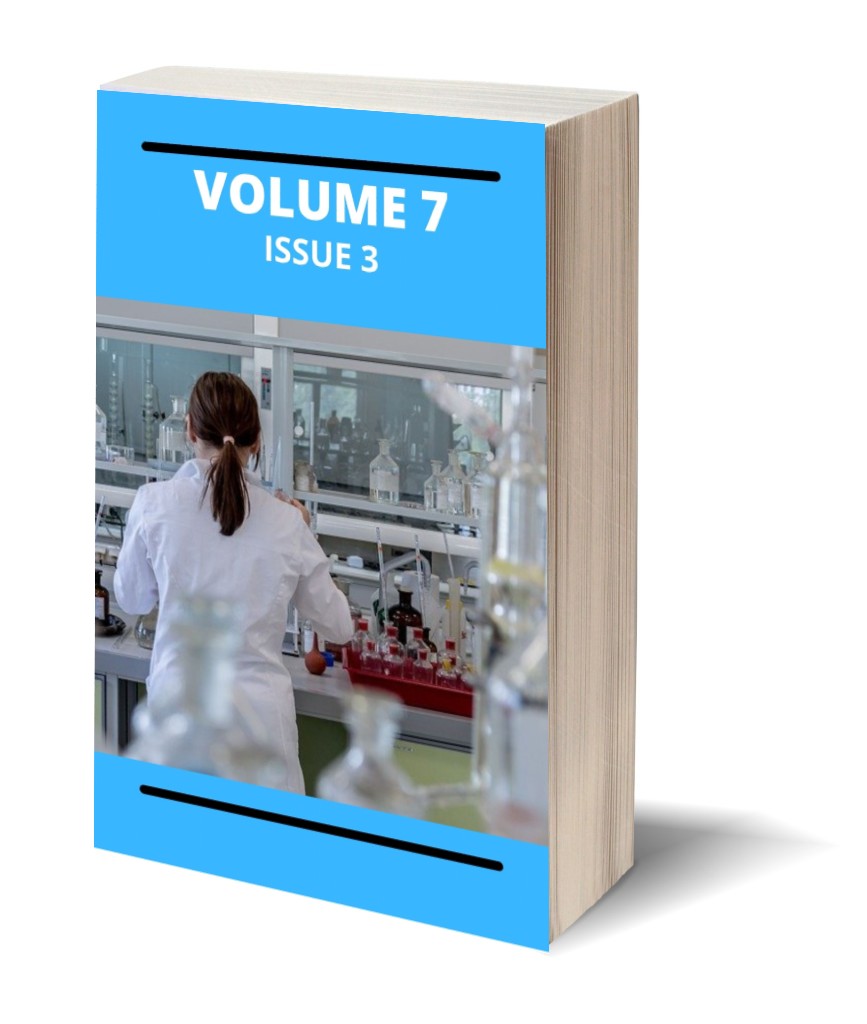A Type I Half Logistic Exponentiated-G Family of Distributions: Properties and Application
Keywords:
Hazard rate, Reliability, Exponentiated-G, Type I Half Logistic G, Maximum likelihood, Order StatisticsAbstract
Olalekan Akanji Bello*, Sani Ibrahim Doguwa, Abubakar Yahaya and Haruna Mohammed Jibril
Several new improved, generalized, and extended families of distributions have been discovered in recent years from families of distributions to aid their application in a variety of fields. The Type I half-logistic exponentiated-G family of distributions which generalizes and extends the Type I half-logistic family of distributions, with two extra positive shape parameters is investigated and proposed. We discuss some of the statistical properties of the proposed family such as explicit expressions for the quantile function, ordinary and incomplete moments, generating function, reliability, and order statistics. Some of the new family’s sub-models are discussed. We discuss the estimation of the model parameters by the method of maximum likelihood. Two real data sets are employed to show the applicability and flexibility of the new family.
Downloads
Published
Issue
Section
Most read articles by the same author(s)
- Abdulmuahymin Abiola Sanusi, Sani Ibrahim Doguwa, Abubakar Yahaya, Yakubu Mamman Baraya, Topp Leone Exponential – Generalized Inverted Exponential Distribution Properties and Application , Communication In Physical Sciences: Vol. 8 No. 4 (2022): VOLUME 8 ISSUE 4
- Ismail Kolawole Adekunle, Ibrahim Sule, Sani Ibrahim Doguwa, Abubakar Yahaya, On the Properties and Applications of Topp-Leone Kumaraswamy Inverse Exponential Distribution , Communication In Physical Sciences: Vol. 8 No. 4 (2022): VOLUME 8 ISSUE 4
- Abubakar Yahaya, Modification of Dual to Separate Product-type Exponential Estimator in Case of Post- Stratification , Communication In Physical Sciences: Vol. 7 No. 4 (2021): VOLUME 7 ISSUE 4
- Sadiq Muhammed, Tukur Dahiru, Abubakar Yahaya, The Inverse Lomax Chen Distribution: Properties and Applications , Communication In Physical Sciences: Vol. 8 No. 3 (2022): VOLUME 8 ISSUE 3
- Kolawole Ismail Adekunle, Abubakar Yahaya, Sani Ibrahim Doguwa, Aliyu Yakubu, On the Exponentiated Type II Generalized Topp-Leone-G Family of Distribution: Properties and Applications , Communication In Physical Sciences: Vol. 11 No. 4 (2024): VOLUME 11 ISSUE 4
Similar Articles
- Idayat Abubakar Salau, Aminu Suleiman Mohammed, Hussaini Garba Dikko, Type I Half-Logistic Exponentiated Kumaraswamy Distribution With Applications , Communication In Physical Sciences: Vol. 12 No. 2 (2025): VOLUME 12 ISSUE 2
- Yakubu Isa, Radiya Muhammad Said, Juliet Wallen Piapna, Abdulhaq Bashir, Development and Applications of the Type II Half-Logistic Inverse Weibull Distribution , Communication In Physical Sciences: Vol. 11 No. 4 (2024): VOLUME 11 ISSUE 4
- Isah Haruna, Yahaya Zakari, Umar Kabir Abdullahi, Reuben Oluwabukunmi David, Jamilu Yunusa Falgore, On the Study of Kumaraswamy Reduced Kies Distribution: Properties and Applications , Communication In Physical Sciences: Vol. 12 No. 3 (2025): VOLUME 12 ISSUE 3
- Kingsley Uchendu, Emmanuel Wilfred Okereke, Exponentiated Power Ailamujia Distribution: Properties and Applications to Time Series , Communication In Physical Sciences: Vol. 12 No. 5 (2025): Vol 12 ISSUE 5
- Musa Ndamadu Farouq, Nwaze Obini Nweze, Monday Osagie Adenomon, Mary Unekwu Adehi, Derivation of a New Odd Exponential-Weibull Distribution , Communication In Physical Sciences: Vol. 11 No. 4 (2024): VOLUME 11 ISSUE 4
- Emmanuel Wilfred Okereke, Sunday Ngozi Gideon, Kingsley Uchendu, Statistical Properties and Application of Bagui-Liu-Zhang Distribution , Communication In Physical Sciences: Vol. 8 No. 3 (2022): VOLUME 8 ISSUE 3
- Kolawole Ismail Adekunle, Abubakar Yahaya, Sani Ibrahim Doguwa, Aliyu Yakubu, On the Exponentiated Type II Generalized Topp-Leone-G Family of Distribution: Properties and Applications , Communication In Physical Sciences: Vol. 11 No. 4 (2024): VOLUME 11 ISSUE 4
- Kingsley Uchendu, Emmanuel Wilfred Okereke, A New Symmetric Bimodal Extension of Ailamujia Distribution: Properties and Application to Time Series Data , Communication In Physical Sciences: Vol. 12 No. 6 (2025): Volume 12 ISSUE 6
- Ismail Kolawole Adekunle, Ibrahim Sule, Sani Ibrahim Doguwa, Abubakar Yahaya, On the Properties and Applications of Topp-Leone Kumaraswamy Inverse Exponential Distribution , Communication In Physical Sciences: Vol. 8 No. 4 (2022): VOLUME 8 ISSUE 4
- Jibril Yahaya Kajuru, Hussaini Garba Dikko, Aminu Suleiman Mohammed, Aliyu Ibrahim Fulatan, Generalized Odd Gompertz-G Family of Distributions: Statistical Properties and Applications , Communication In Physical Sciences: Vol. 10 No. 2 (2023): VOLUME 10 ISSUE 2
You may also start an advanced similarity search for this article.




